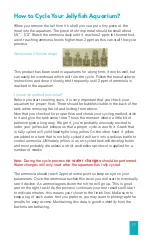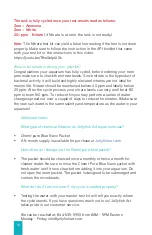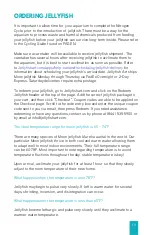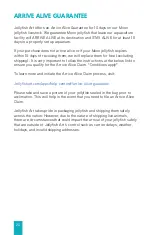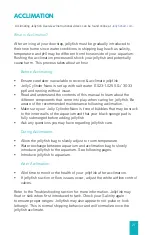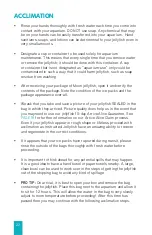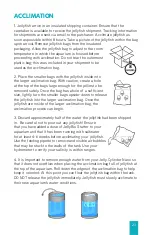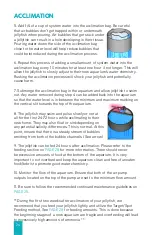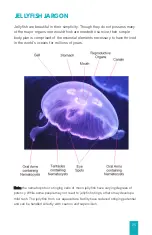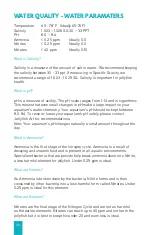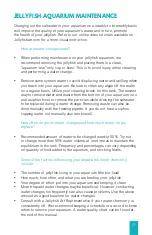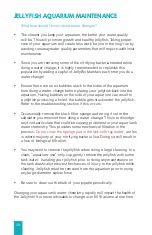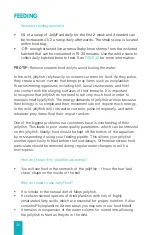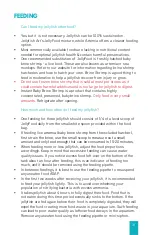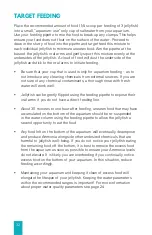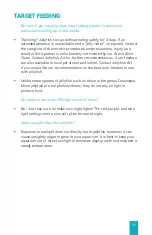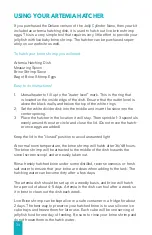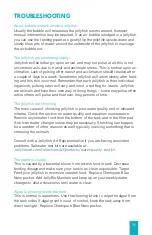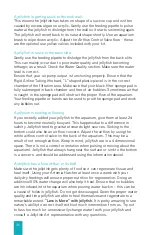
21
ACCLIMATION
Acclimating Jellyfish Overview Instructional videos can be found online at
Jellyfishart.com
.
What is Acclimation?
After arriving at your doorstep, jellyfish must be gradually introduced to
their new home since water conditions in shipping bag (such as salinity,
temperature and pH) may be different from those inside of your aquarium.
Rushing the acclimation process will shock your jellyfish and potentially
cause harm. This process takes about an hour.
Before Acclimating:
• Ensure caretaker is available to receive & acclimate jellyfish
• Jelly Cylinder Nano is set up with salt water (1.023-1.025 SG / 30-33
ppt) and running without issue.
• Read and understand the contents of this manual to learn about the
different components that come into play when caring for jellyfish. Be
aware of the recommended maintenance following acclimation.
• Make sure your Jelly Cylinder Nano is free of bubbles that may be stuck
to the inner walls of the aquarium and that your black sponge pad is
fully submerged before adding jellyfish.
• Ask any questions you may have regarding jellyfish care.
During Acclimation:
• Allow the jellyfish bag to slowly adjust to room temperature.
• Water exchange between aquarium and acclimation bag to slowly
introduce jellyfish to the aquarium. See following pages.
• Introduce jellyfish to aquarium.
After Acclimation:
• Allot time to monitor the health of your jellyfish after acclimation.
• If jellyfish suction or flow issues occur, adjust the white airflow control
valves.
Refer to the Troubleshooting section for more information. Jellyfish may
float or sink when first introduced to tank. Check your Salinity again
to ensure proper ranges. Jellyfish may also appear to not pulse or look
lethargic. This is normal shipping behavior and will normalize once the
jellyfish acclimate.











